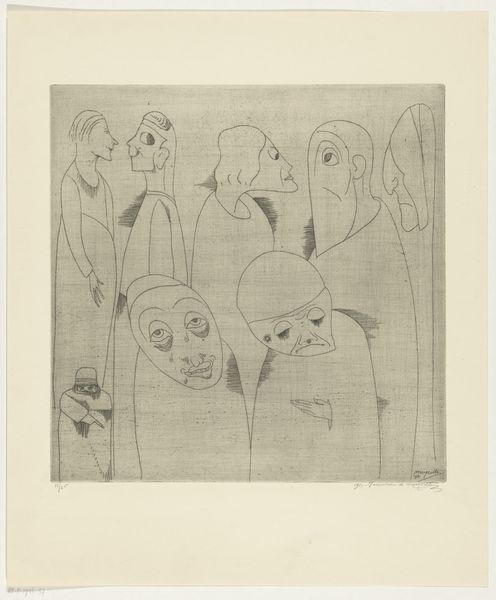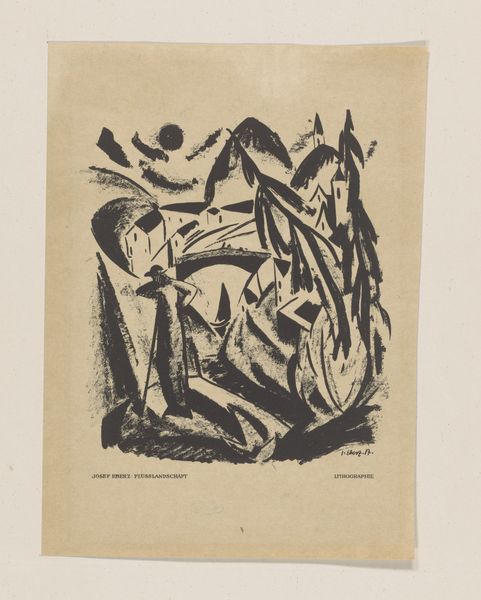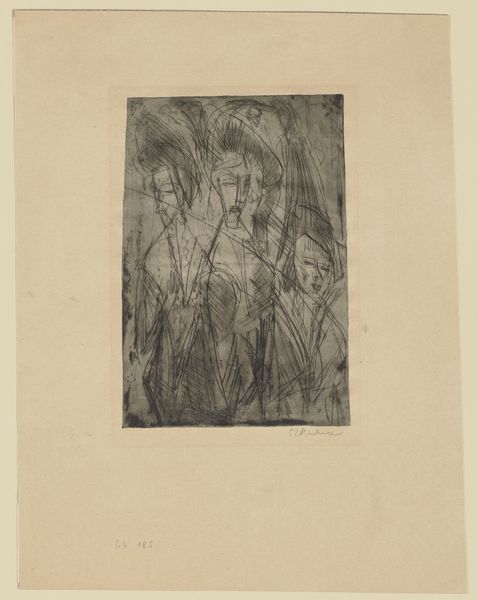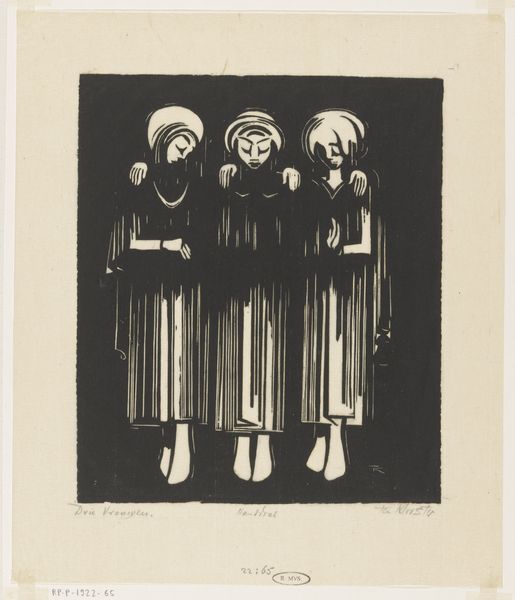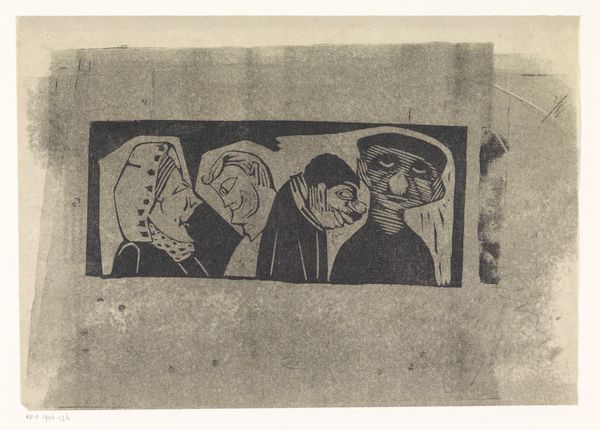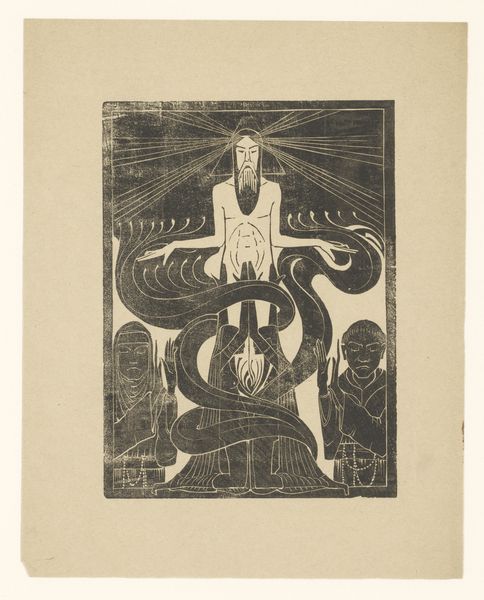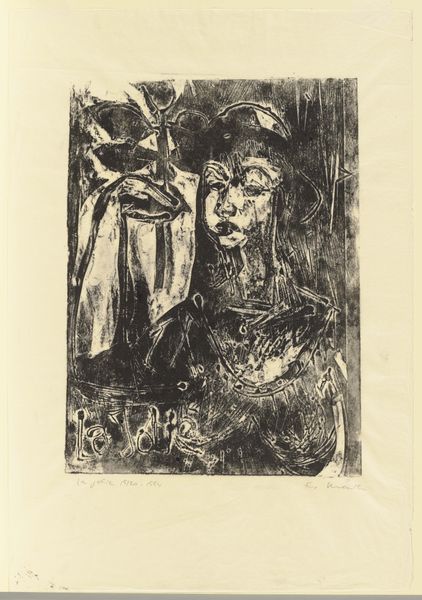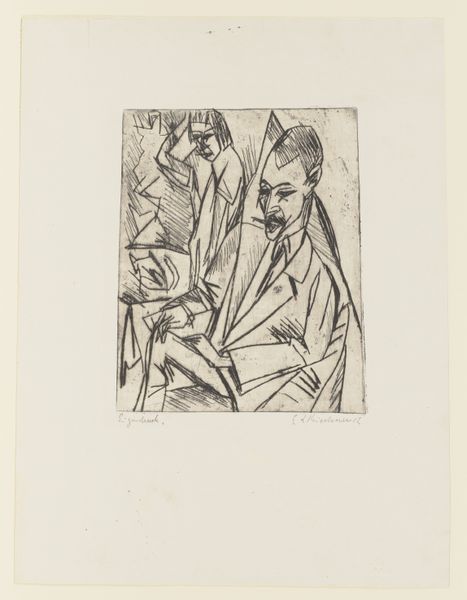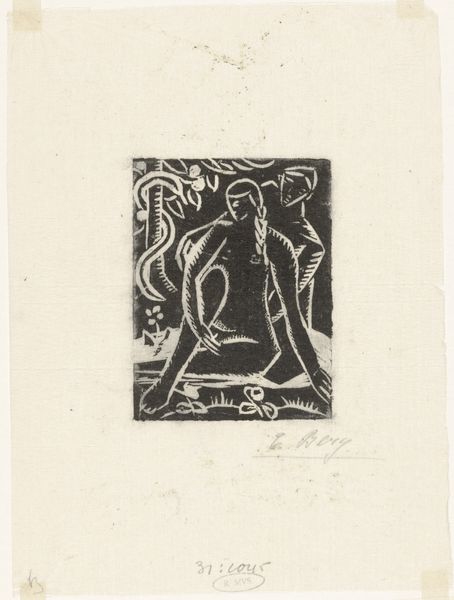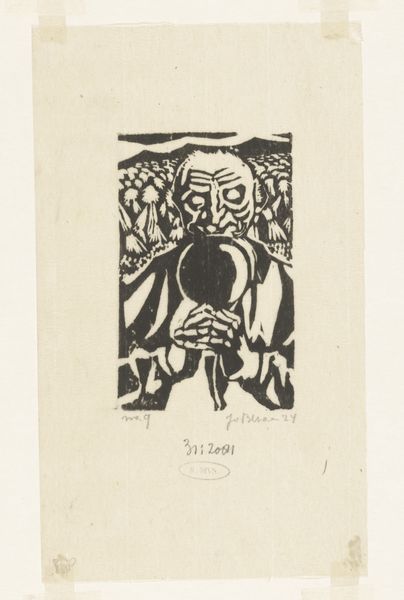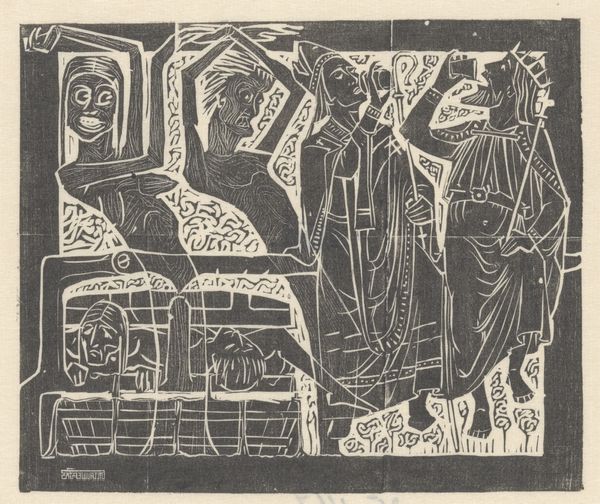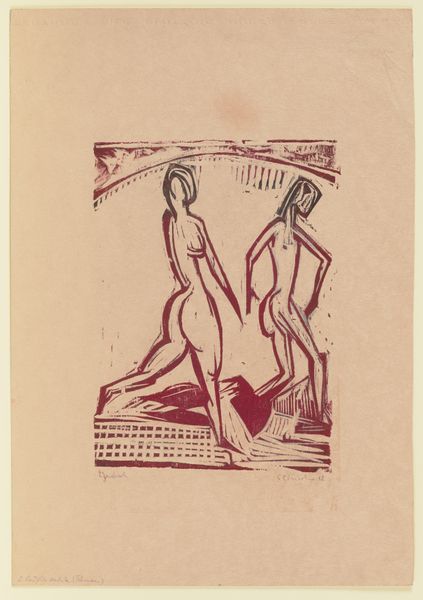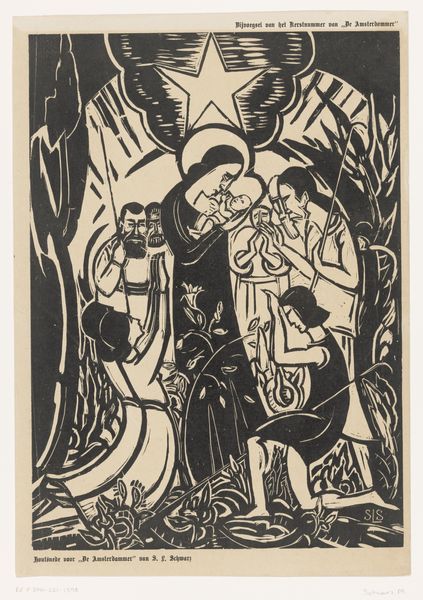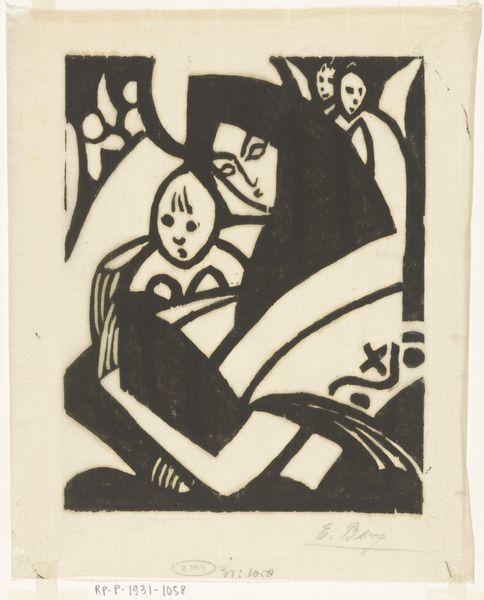
Dimensions: height 208 mm, width 150 mm, height 388 mm, width 270 mm
Copyright: Rijks Museum: Open Domain
Curator: Let's discuss "Drie vrouwen," or "Three Women," a striking woodcut created by Else Berg before 1931. Editor: Immediately, the bold, contrasting black and white grabs you. The stark lines, the very simplified forms—it's all incredibly graphic. Curator: Berg was deeply engaged with expressionism. This print exemplifies that. Consider the societal constraints on women at the time and how Berg boldly portrays female nudes—three of them, confident and without shame. What do you make of that semiotic defiance? Editor: True, the simplified forms carry power, but to my eye the graphic treatment almost flattens the figures. The use of negative space is quite dynamic, creating a sort of visual push and pull. It becomes almost abstract if you focus on the voids as shapes. Curator: Indeed, that dynamic tension you point out serves to underscore the women's unified strength, an allusion, perhaps, to the burgeoning feminist movement in Europe during this era. Are these figures individuals or a representation of sisterhood and solidarity against patriarchal structures? Editor: Interesting. While that’s a very valid interpretation, one could also analyze the forms in themselves. The geometry is key here. See how the figures are assembled—the stark planes of the faces and limbs—it speaks to a Cubist influence as well, even within this expressionist idiom. The linear quality overall, while reduced, creates dynamic vectors between the figures and within the total design. Curator: Berg's work invites a multi-faceted understanding of the intersections between her artistic vision and her own experiences. As a Jewish woman artist during a tumultuous era, she offers us an undeniably progressive image, in the content and the mode of figuration, especially. Editor: Ultimately, for me, it's the composition—the artist’s clever manipulation of mass and void, light and shadow—that leaves the strongest impression. It presents the figures as unified in spite of simplification. Curator: So, from historical narrative to formal design, this work offers an opportunity to ponder the female experience across the early 20th century. Editor: An enduring example of the visual and thematic power of stark artistic economy.
Comments
No comments
Be the first to comment and join the conversation on the ultimate creative platform.
